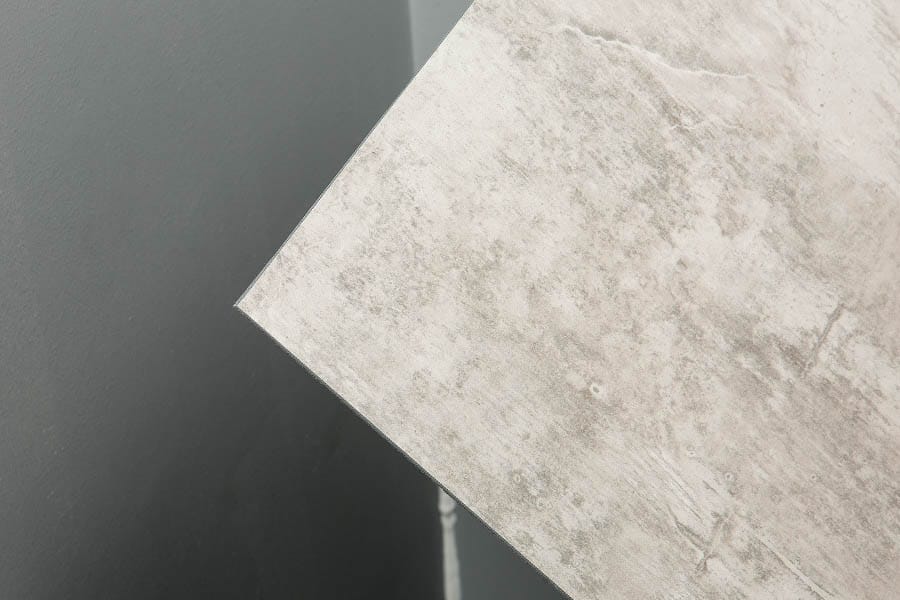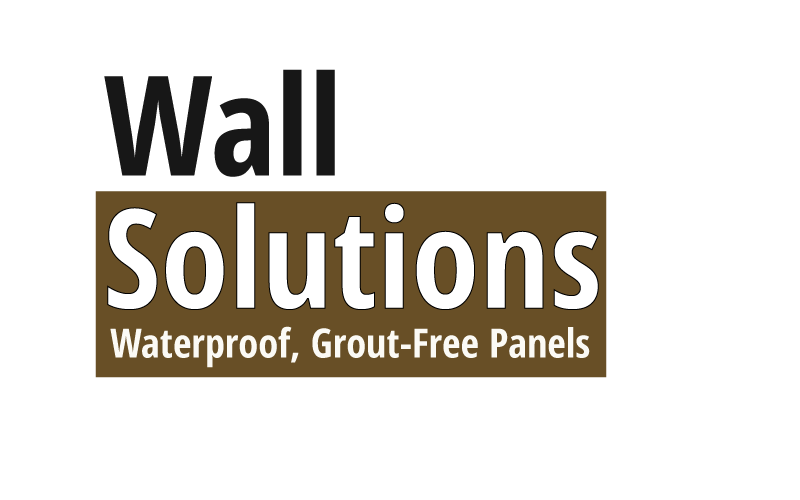Signature Series Installation Guide
READ this entire installation guide before beginning your installation.
ACP is not responsible and will not be held liable for project failures if installation guidelines are not followed. ACP recommends that you install these tiles over an existing substrate to ensure proper structural integrity. Wall Solutions – Signature Series tiles are not intended to be attached to raw concrete, poured concrete walls or concrete block basement walls.
FOR INSTALLATION IN DRY ENVIRONMENTS
Appropriate substrates in a dry environment would include framed walls with existing tile, drywall, cement board, OSB, or plywood. Wall Solutions – Signature Series tiles must be attached to structures that comply with your local building codes and have incorporated appropriate moisture abatement measures.
FOR SHOWER, TUB OR DIRECT WATER ENVIRONMENTS
Although Wall Solutions – Signature Series tiles are 100% waterproof when used with sealant in the seams, we recommend you follow your local building codes for wet environments like shower and tub enclosures. In a tub or shower area, existing ceramic tile walls can be covered with no additional preparation. Otherwise, installation over a waterproof substrate is required, such as Cement Board®, Schluter Kerdi Board®, GP Densheild®, Johns Manville Go Board®, Hardiebacker®, WPBK Triton®, Fiberock® and equivalent products. Always follow manufacturer’s installation instructions to create a waterproof enclosure.
FOR BACKSPLASH, LAUNDRY ROOM OR OTHER DAMP ENVIRONMENTS
We recommend using a silicone sealer in the tile’s tongue and groove seams for damp environments. Follow manufacturer’s directions and your local building code ACP, LLC is not responsible or liable for any labor costs or damaged product incurred as a result of improper installation. All product defects are covered under our 10-year limited warranty. Due to manufacturing variations, we cannot guarantee an exact color match from lot to lot. Prior to installing Wall Solutions – Signature Series tiles and trims on your walls, please unpackage & lay out all purchased product to ensure color consistency. If you encounter unreasonable color variation, please give us a call at 1-800-434-3750 (7am-4:30pm CST, M-F) so that we may assist you with your project.
Tools and supplies needed:
- Protective eye wear
- Measuring tape
- Utility knife
- Level
- Hand saw or circular saw/table saw
- Drill bit & jig saw (for cutting holes)
- Caulking gun for 10.3 oz. adhesive tube
- Adhesive for PVC panels. Recommended adhesives: Loctite® Power Grab® Ultimate (white formula only), Titebond® Titegrab Ultimate®, Liquid Nails® Fuze It® and Manus® 75-AM HV
- Silicone-based sealant for kitchen/bath (for wet environments)
- Optional: Matching trim
- Optional: Wood shims
Wall Tile Installation
Before you begin installation
Before starting, make sure all surfaces are clean, dry, smooth, and free from dust, grease, wax, etc. Clean the back surface of the panels by wiping with a clean cloth.
Perform a “dry layout” prior to applying adhesive. This will help you visualize tile cuts and placement of tiles with similar designs. Some of the stone-look tiles include color variations, lines, and cracks to emulate the look of natural stone. Avoid placing tiles with similar or identical patterns or texture next to each other. Measure walls, & check for level and square. Depending on dimensions and room construction, you may need to trim some panels accordingly.
Installation in environments exposed to a direct flow of water (shower, mud room or garage) require a 1/8-inch bead of sealant to be used in all tongue and groove connections (image A). Add a bead of the sealant along recently cut edges to be placed into the corner. Repeat this process on perpendicular tile also facing corner (image B).
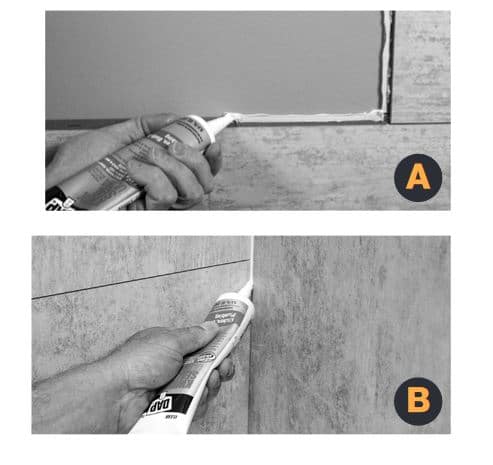
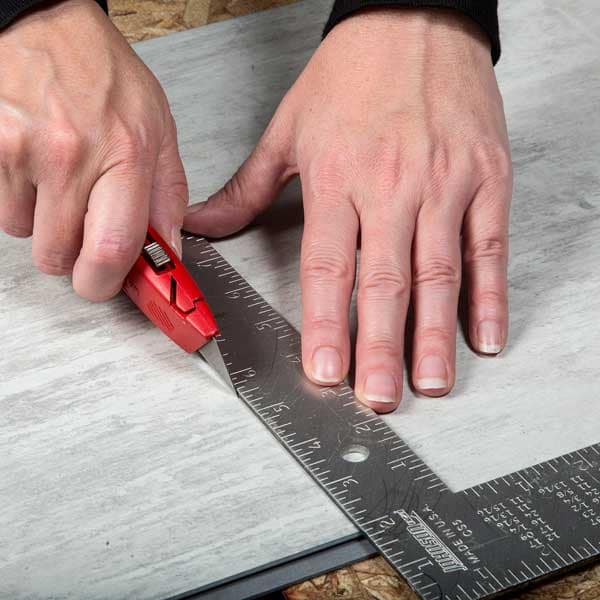

Cut Wall Solutions – Signature Series tiles by scoring and snapping with a utility knife. (image C, D). This method may require sanding the snapped edges.
You can also use standard wood working tools like a table saw or circular saw with a fine-tooth blade to provide a clean, smooth cut (image E). Use a 60-tooth blade or higher. To ensure the base of the saw does not scratch the surface of the panel, we recommend protecting the surface with blue painter’s tape.
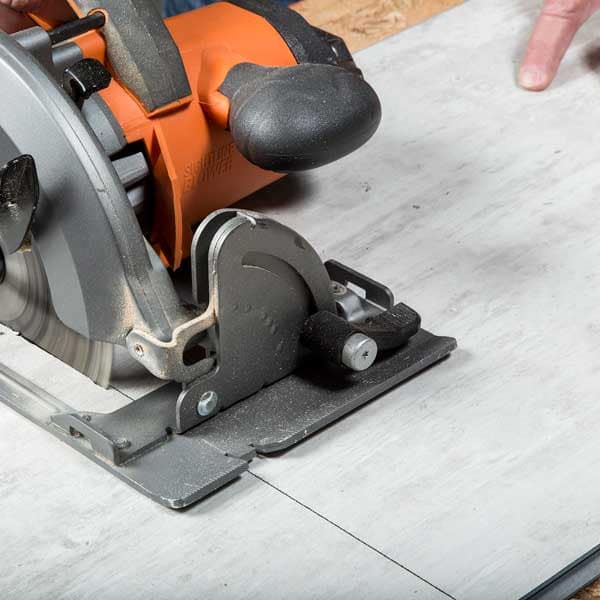
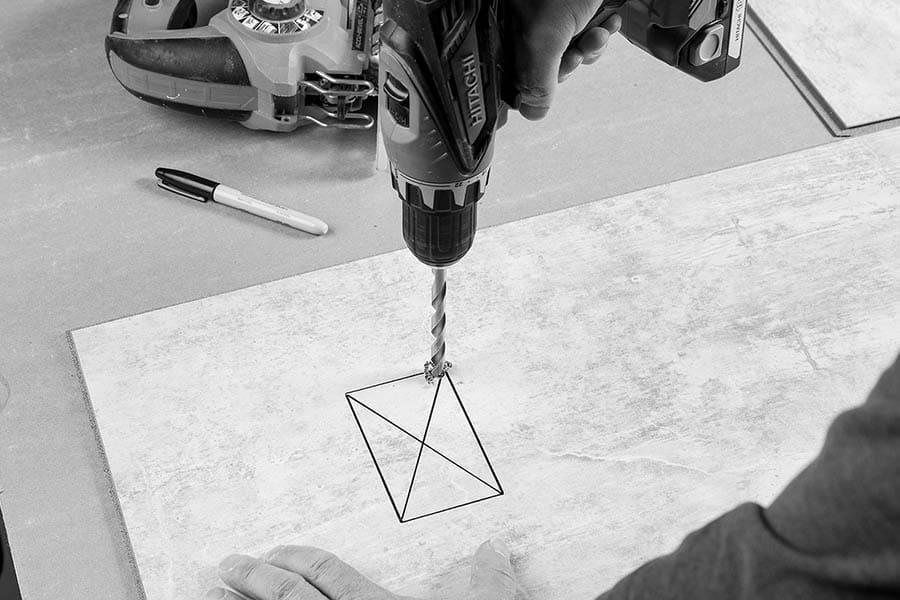

Cut panels for outlets and light switches. Measure and mark the borders where the opening will be with a marker. Drill a 1/2-inch hole using a drill in a corner of the cut-out section (image F). Use a jigsaw to cut the remaining opening, following your tracing (image G).
Do not attach accessories like coat hooks, light fittings, mirrors, etc. directly to the tiles. Drill holes through the tiles and use suitable anchors to attach the accessories securely into the framing behind. Seal per sealant instructions.
Installation onto drywall, OSB, plywood or existing tile subtrates
If you choose to finish the edges, we recommend our matching trim for both end pieces and inside corners. We recommend using baseboard or cove molding to finish the bottom row, regardless of flooring material. For both end trim pieces and corner trims, install trim in appropriate location prior to setting tile into trim (image H).
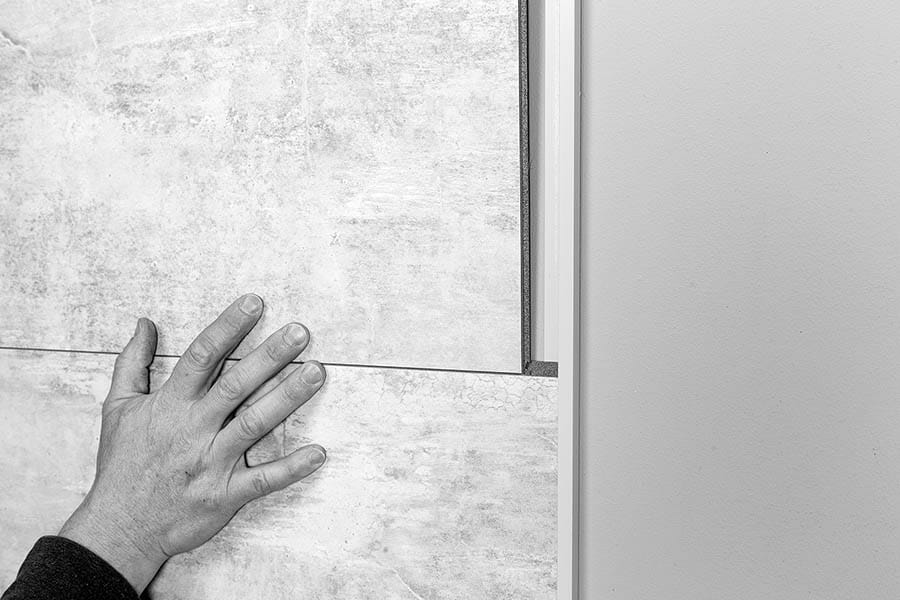
Wall Solutions – Signature Series tiles’ unique interlocking edges have a tongue and a groove (image I). The tile’s groove should be facing up when installing. This will prevent any moisture buildup.
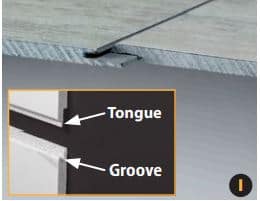
If your project calls for Wall Solutions – Signature Series tiles starting at a floor, be sure the first row is straight and level. Determine the desired height of your first tile row and snap or draw a level line at that height for a reference line. Align the tops of each panel in the first row to the snapped line (image J). It is important that this starting row be level and straight. If you are starting with full tile, cut off the tongue or use a matching J-trim along the bottom edge.
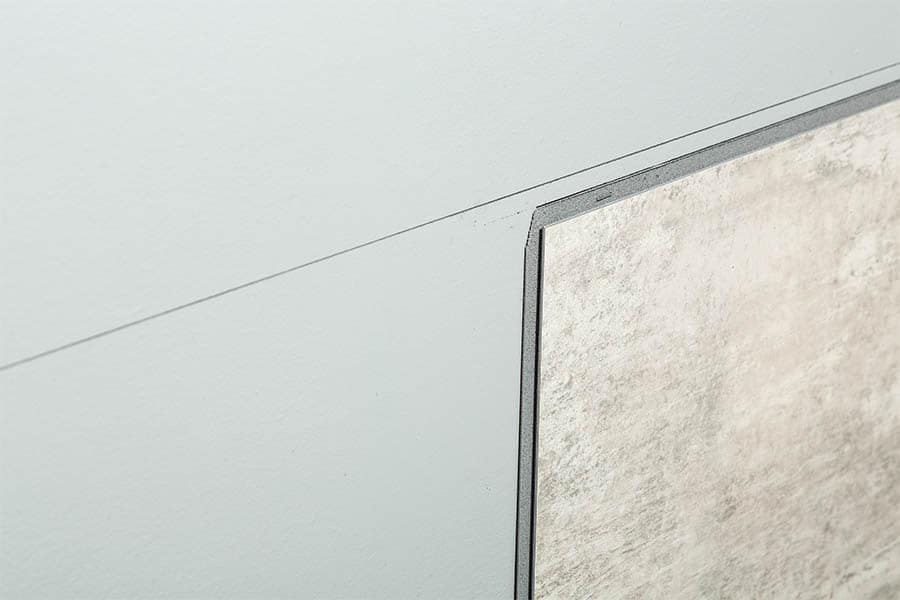
To install your first panel, begin with bottom row. Make sure the first panel you intend to install fits properly and is level. You may need to place a temporary shim under each bottom tile to hold them in place while the adhesive sets (image K).
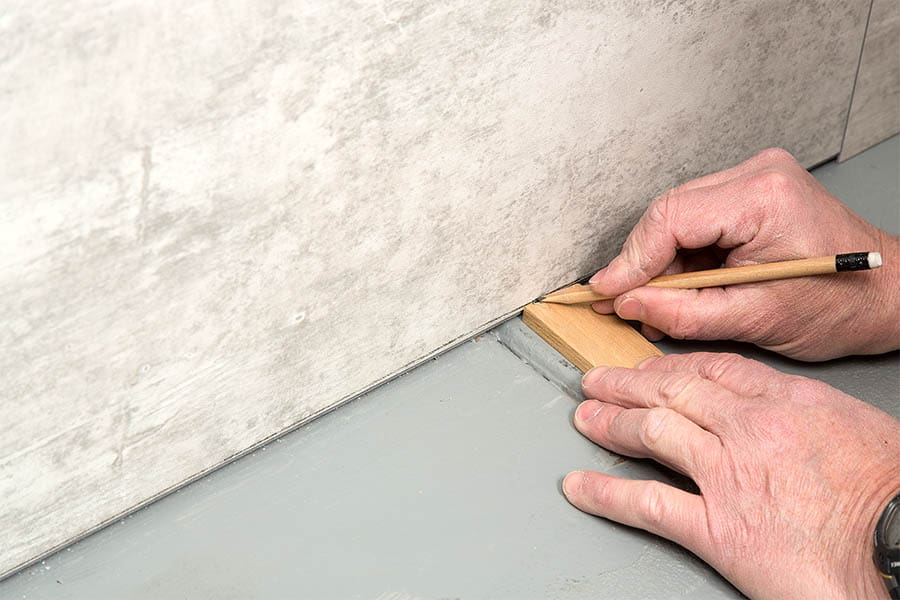
Apply adhesive to the back of the tile. Carefully read and follow adhesive manufacturer’s directions. Apply a 1/4-inch bead in a typical “M” or “W” pattern, and a bead around the tile perimeter about 1-inch in (image L).
Apply the panel to the substrate by pressing it into place. Apply even pressure with your hands across the entire panel. If necessary, use shims or pins to hold panels in place until the adhesive sets.
Wipe off excess adhesive. Use water and a cloth. Clean off any adhesive residue that is visible while it is still wet. Do not allow this residue to dry as it will be difficult to clean up when dry and could damage the finish.
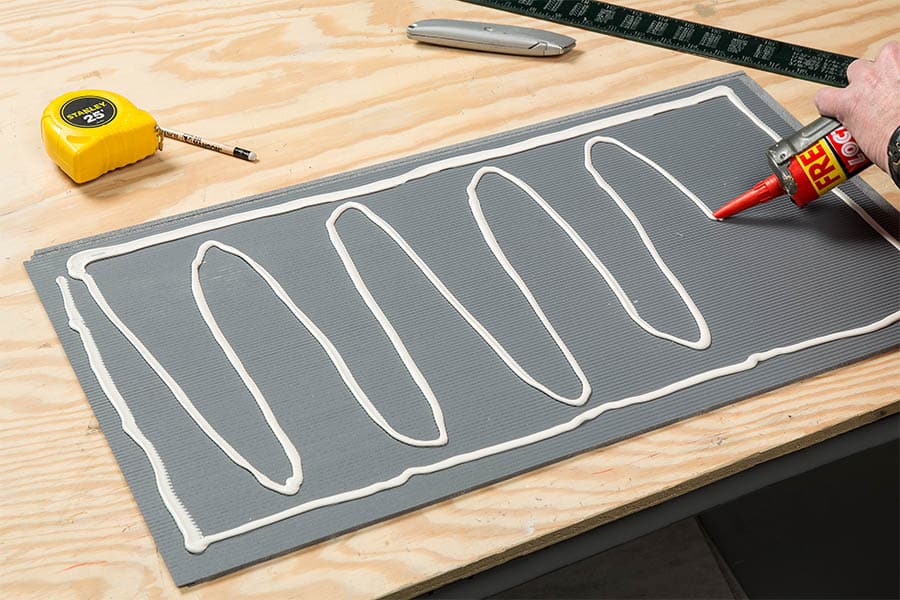
Connect the next tile by fully inserting the tongue into the groove (image M).
Repeat until bottom row is complete. If installing in a corner, cut off the flange facing the corner to allow a plumb surface against the substrate. Repeat this process on tile that abuts the previous one also facing the corner. Allow the adhesive on the bottom row to set up so that all subsequent rows remain level.
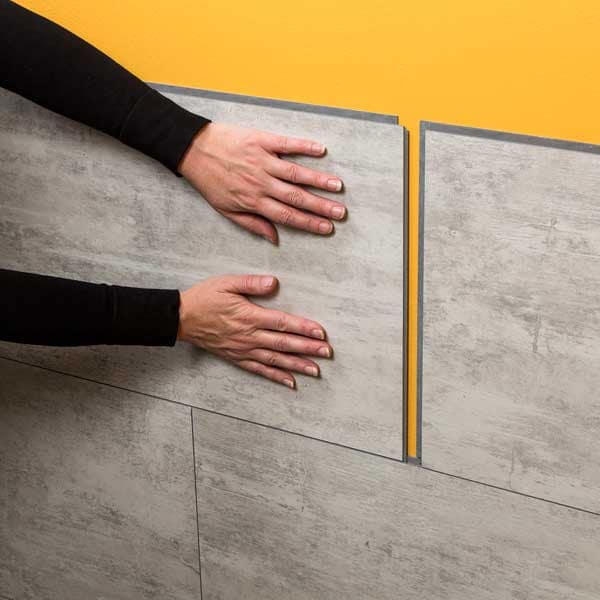
Determine what tile pattern you want to use before starting the second row MP(image N, O). Commonly-used options are running bond (vertical joints are staggered) and stack bond (vertical joints line up).
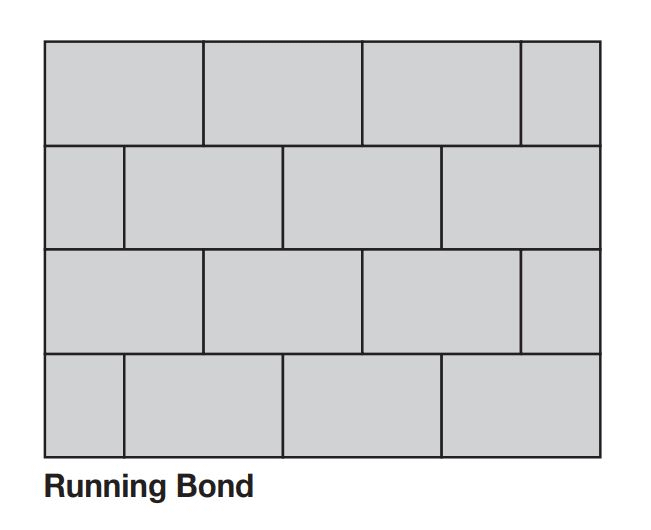

After the first row has set up, apply the remaining tiles according to the pattern or layout you desire. Use adhesive and methods described above for remaining rows.
When installing the top row, install as you have been until you get to the last tile in the corner. If tiles butt against your ceiling, when installing the last tile, remove flanges from side (image P). Or use our matching L trim. Lay tile into place. Apply pressure to ensure tile is flush with others. Use a recommended silicone sealer-as previously described-in joints to ensure a water-tight installation, if applicable.
